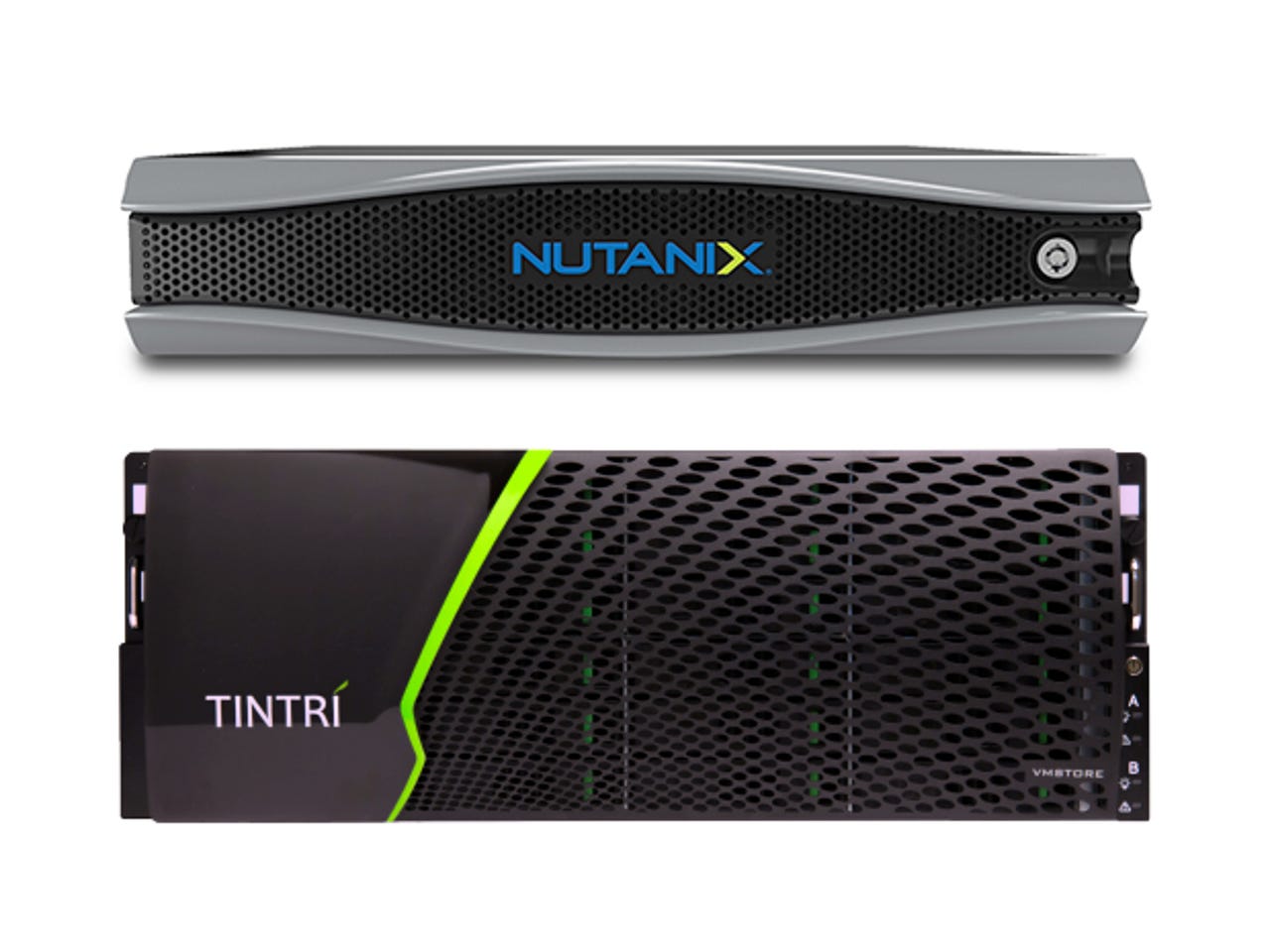Nutanix versus Tintri: Two approaches to software-defined storage

For years, servers and storage more or less managed to keep pace with each other. As faster processors appeared disks got bigger and quicker, and new ways of sharing storage were developed, such as Network Attached Storage (NAS) and Storage Area Networks (SANs). Then virtualisation arrived, followed by the cloud. This caused a once-amicable relationship to break down as hundreds, if not thousands, of virtual machines began to compete for the same storage resources.
Of course, NAS appliances and SANs have adapted to cope: SSD technology has been introduced to boost performance and reduce power consumption, while fibre-channel and iSCSI enhancements have also helped to ramp up performance. However, neither NAS nor SANs were really designed to share out data to virtual servers and desktops in large numbers. Nor were they built to keep pace with virtual machines that can be provisioned in seconds and moved between host machines at the drop of a hat.
Another issue is the cost of building a SAN, not to mention the sheer complexity of provisioning and managing such solutions, which is typically performed at the LUN rather than virtual disk level.

The race, therefore, is on to virtualise storage to make it a better fit for the software-defined datacentre as well as more affordable and easier to manage. All the big names are busy doing something — including virtualisation leader VMware, which recently released its own Virtual SAN technology (VSAN) built into the kernel of its ESX hypervisor. But there are other solutions, and for this feature we opted to examine two quite different approaches to the problem: one from Nutanix, the other from Tintri.
Nutanix Virtual Computing Platform
Editors' rating
8.5/10
PROS
• Compute and storage in one rack-mount appliance
• Simple scalability at node and appliance level
• 10GbE connectivity
• Rapid deployment
• Cross-platform hypervisor support
CONS
• Potentially disruptive upgrade for existing virtualisation users
VERDICT
Based on industry-standard multi-node server hardware from Supermicro, Nutanix adds a mix of SSD and HDD storage to its appliance plus its own clustering software to deliver both a platform for VMs to run on and a fault-tolerant virtual SAN to go with them.
PRICE
From $74,250 (£43,963) for a 3-node appliance
A relative newcomer to the virtualisation market, Nutanix sells converged infrastructure appliances containing just about everything you need to run virtual machines in terms of both processing and storage. Moreover, despite being based on industry-standard hardware it's a lot more than just the sum of those parts: a nifty layer of clustering software enables direct-attached SATA storage inside the Nutanix boxes to be pooled, virtualised and shared across multiple hypervisors, eliminating the need for a SAN or NAS solution. According to Nutanix, this approach makes for a simpler and more affordable virtualization platform without sacrificing performance, scalability or availability.
To read the full review and conclusion, subscribe to Tech Pro Research (a TechRepublic/ZDNet joint venture)
Tintri VMstore
Editors' rating
8.5/10
PROS
• Rapid deployment
• Compact format with multiple levels of redundancy
• 10GbE connectivity
• Cross-platform hypervisor support
• Storage provisioned, monitored and managed at the VM level
CONS
• Storage only — no hosting of VMs
VERDICT
An easy-to -manage virtual SAN appliance, Tintri's VMstore uses SSDs to maximise performance plus sophisticated software to deliver enterprise-class storage in a format that's uniquely ready for virtual machine use.
PRICE
From $74,000 (£44,246) for the VMstore T620
Billed as 'Zero Management Storage', Tintri VMstore is a rack-mount appliance targeting the virtualisation market — just like the Nutanix Virtual Computing Platform. Unlike the Nutanix appliance, however, VMstore is designed purely to address the storage part of the equation with no compute power to host VMs. This omission may put some customers off, but others will see it as an advantage, enabling the VMstore to be added to an existing setup without having to migrate VMs or rip-and-replace existing host servers. Also, by concentrating on storage, Tintri has come up with a particularly fast, scalable and robust solution that addresses many of the shortcomings of traditional SAN/NAS alternatives, effectively delivering a shared datastore ready to plug into the LAN.
To read the full review and conclusion, subscribe to Tech Pro Research (a TechRepublic/ZDNet joint venture)